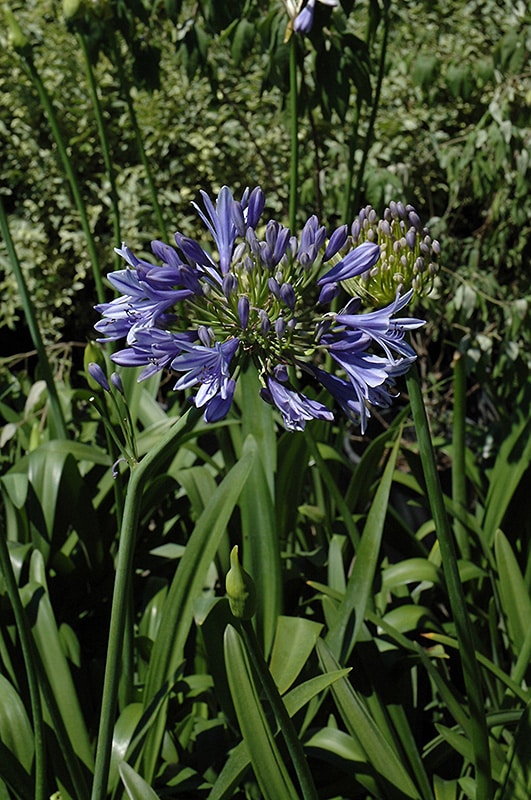Agapanthus Growing Conditions: Dirt, Sunlight, and Watering
Wiki Article
Mastering the Art of Agapanthus Treatment: Vital Steps for Healthy And Balanced Development and Vibrant Blooms
In the realm of cultivation, the cultivation of agapanthus stands as a satisfying undertaking for those that look for to nurture these elegant flowering plants. With their striking flowers and elegant foliage, agapanthus has recorded the focus of gardeners worldwide. However, attaining ideal development and vibrant blooms needs a nuanced strategy that incorporates various crucial steps. From picking the best range to grasping pruning strategies, the journey in the direction of growing growing agapanthus plants is complex and holds the crucial to opening the full potential of these botanical gems.
Selecting the Right Agapanthus Variety

When picking the ideal Agapanthus range for your garden, consider factors such as climate viability, bloom color, and development habit. Additionally, take into consideration the environment in your area to make sure the Agapanthus variety you pick can prosper in your particular conditions. Recognizing the development practice of different Agapanthus ranges is vital for correct placement within your yard.
Perfect Planting Problems
Taking into consideration the optimum ecological demands is necessary for successful Agapanthus growing. Agapanthus plants are delicate to cold temperature levels and ought to be secured from frost throughout winter months.To make certain healthy and balanced development and vibrant blossoms, plant Agapanthus light bulbs at a deepness of concerning 2-4 inches and room them 8-12 inches apart. Including natural matter, such as garden compost, to the dirt can improve drainage and fertility, promoting robust origin development. Mulching around the base of the plants aids keep dampness and subdues weed development. Routine watering is vital, specifically throughout the growing season, to keep the soil consistently damp however not saturated.
Watering and Fertilizing Tips
Maintaining appropriate moisture degrees and supplying necessary nutrients are crucial components in the care regimen for Agapanthus plants. When it comes to sprinkling Agapanthus, it is critical to strike an equilibrium. These plants prefer consistently wet soil but are susceptible to root rot if overwatered.Feeding Agapanthus is crucial for advertising healthy growth and respected blossoms. Apply a well balanced fertilizer, such as a 10-10-10 formula, in the early spring as new growth emerges. Repeat this application every 6-8 weeks throughout the growing season. Stay clear of extreme fertilization, as it can cause lavish foliage at the expenditure of blossoms. Always follow the maker's instructions for correct dilution and application methods. By adhering to these watering and feeding ideas, you can guarantee your Agapanthus plants grow and create vivid, lasting flowers.
Trimming Techniques for Agapanthus
Pruning Agapanthus plants at the suitable times and with correct methods is important for preserving their wellness and advertising optimal development and blooming. The perfect time to trim Agapanthus is in late winter months or very early spring before brand-new development emerges.Deadheading invested useful site blossoms can likewise redirect the plant's power into generating more flowers rather than establishing seeds. If you desire to collect seeds for breeding, leave some flowers to completely dry and mature on the plant.
Bear in mind to make use of tidy, sharp tools to make specific cuts and reduce the threat of presenting conditions. Agapanthus. Normal pruning will help keep your Agapanthus looking healthy and neat while making certain an abundant display screen of stunning blossoms
Dealing With Common Parasites and Illness
After making certain proper pruning techniques for Agapanthus, it is important to resolve typical pests and diseases that can impact the wellness and vitality of these plants. Agapanthus plants are usually sturdy but can still drop sufferer to particular problems. One common pest that her explanation impacts Agapanthus is the Agapanthus gall midge. This little, orange fly lays its eggs in the foliage, resulting in altered growth and blossom buds that stop working to open up. To fight this bug, prune and ruin any damaged plant parts and consider utilizing insecticidal soap.Additionally, Agapanthus plants can suffer from origin rot if they are index grown in inadequately draining pipes dirt. By being watchful and taking timely activity versus pests and conditions, you can aid your Agapanthus plants grow and generate vibrant blooms. Agapanthus.

Final Thought
In verdict, understanding the art of agapanthus care entails picking the ideal selection, offering ideal planting conditions, proper watering and fertilizing, appropriate trimming methods, and addressing common pests and illness. By complying with these essential actions, you can guarantee healthy and balanced growth and vibrant blossoms for your agapanthus plants. Keep in mind to consistently check and maintain your plants to advertise their total wellness and durability.To guarantee healthy development and vibrant flowers, plant Agapanthus bulbs at a depth of concerning 2-4 inches and area them 8-12 inches apart. By following these watering and feeding pointers, you can guarantee your Agapanthus plants flourish and generate vibrant, lasting blossoms.
One typical insect that affects Agapanthus is the Agapanthus gall midge. Furthermore, Agapanthus plants can endure from origin rot if they are grown in improperly draining dirt. By adhering to these essential steps, you can ensure healthy and balanced development and vivid blossoms for your agapanthus plants.
Report this wiki page